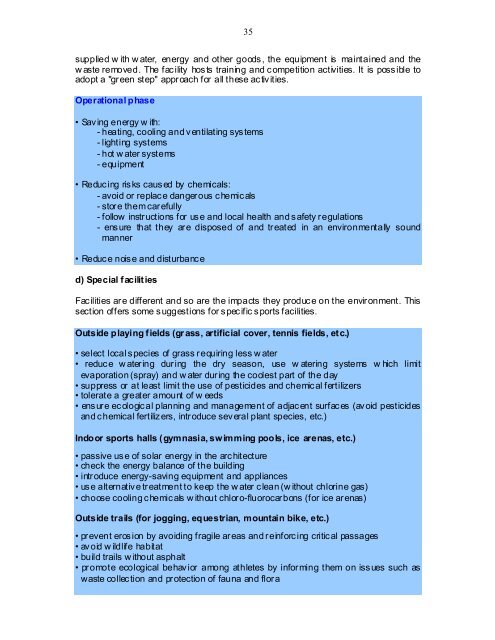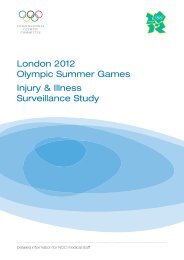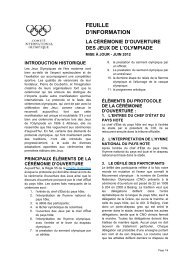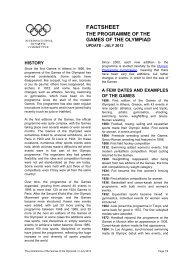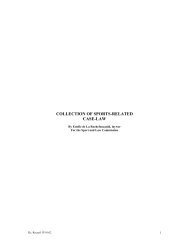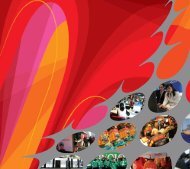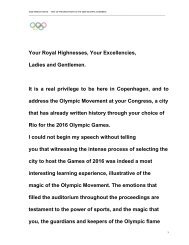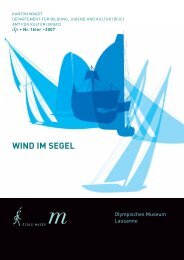MANUAL SPORT ENVIRONMENT
MANUAL SPORT ENVIRONMENT
MANUAL SPORT ENVIRONMENT
You also want an ePaper? Increase the reach of your titles
YUMPU automatically turns print PDFs into web optimized ePapers that Google loves.
35<br />
supplied w ith w ater, energy and other goods , the equipment is maintained and the<br />
waste removed. The facility hosts training and competition activities. It is possible to<br />
adopt a "green step" approach for all these ac tiv ities.<br />
Operational phase<br />
• Saving energy w ith:<br />
- heating, cooling and v entilating sys tems<br />
- lighting systems<br />
- hot w ater systems<br />
- equipment<br />
• Reduc ing ris ks caus ed by chemicals:<br />
- avoid or replac e dangerous c hemic als<br />
- store them carefully<br />
- follow instructions for us e and local health and s afety regulations<br />
- ens ure that they are disposed of and treated in an environmentally sound<br />
manner<br />
• Reduc e nois e and disturbanc e<br />
d) Special facilities<br />
Fac ilities are different and so are the impacts they produc e on the environment. This<br />
section offers some s uggestions for s pec ific s ports facilities.<br />
Outside playing fields (gr ass, artificial cover, tennis fields, etc.)<br />
• select local s pecies of grass requiring less w ater<br />
• reduc e w atering during the dry season, use w atering systems w hich limit<br />
evaporation (spray) and w ater during the coolest part of the day<br />
• suppress or at least limit the use of pesticides and chemic al fertilizers<br />
• tolerate a greater amount of w eeds<br />
• ensure ecological planning and management of adjacent surfaces (avoid pesticides<br />
and c hemical fertiliz ers, intr oduce sev eral plant species, etc.)<br />
Indoor sports halls (gymnasia, swimming pools, ice arenas, etc.)<br />
• passive us e of solar energy in the arc hitecture<br />
• check the energy balance of the building<br />
• introduce energy-saving equipment and appliances<br />
• us e alternativ e treatment to keep the w ater c lean (w ithout chlorine gas)<br />
• choose cooling c hemic als w ithout chloro-fluorocarbons (for ice arenas)<br />
Outside trails (for jogging, equestrian, mountain bike, etc.)<br />
• prevent eros ion by avoiding fragile areas and reinforc ing critic al passages<br />
• avoid wildlife habitat<br />
• build trails w ithout asphalt<br />
• promote ecological behav ior among athletes by informing them on iss ues such as<br />
waste collec tion and protection of fauna and flora


